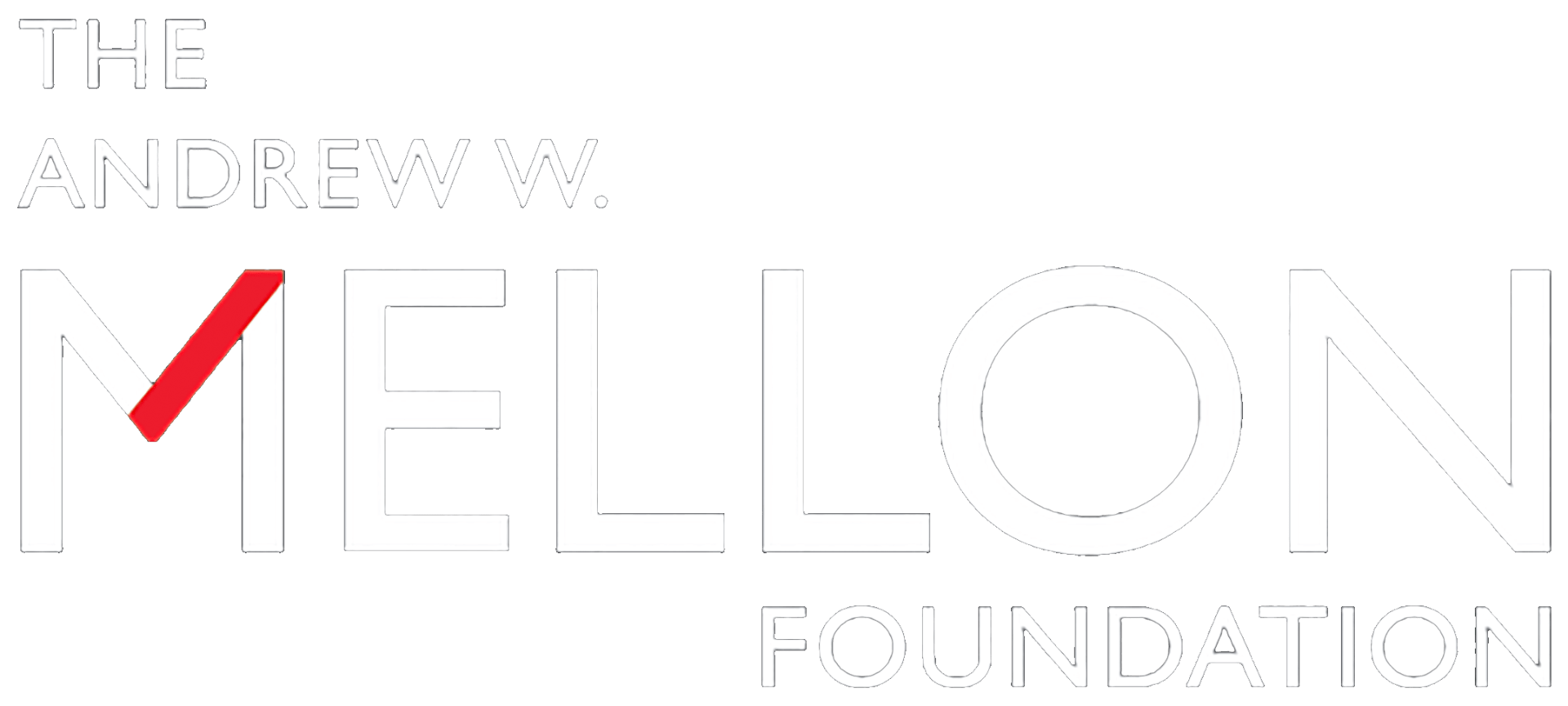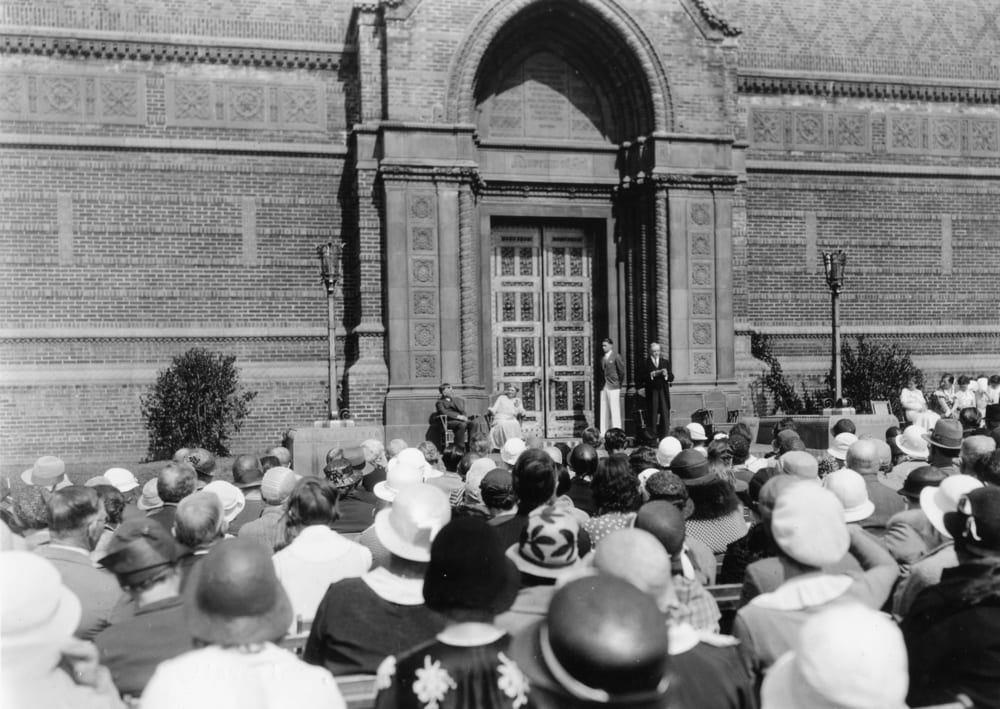Digital
GLAM Spaces
Conference
Building a Community of Practice for User Experience and Accessibility




Web accessibility and user experience are important for centering those who want to learn, research, and teach with digital and digitized cultural heritage. In 2018, the University of Oregon was awarded an Andrew W. Mellon Foundation grant to experiment and build collaboration capacity for how GLAM assets could be used in innovation ways for research.
Digital GLAM Spaces is a free conference about building community around web accessibility and user experience. It’s a place for GLAM practitioners to share definitions and best practices for what is UX and accessibility; communicate digital strategies for incorporating user research into digital projects; and talk about the people, skillsets, and support needed to be better and make web accessibility and user experience part of our work instead of bolted on.
Web accessibility and user experience are important for centering those who want to learn, research, and teach with digital and digitized cultural heritage. In 2018, the University of Oregon was awarded an Andrew W. Mellon Foundation grant to experiment and build collaboration capacity for how GLAM assets could be used in innovation ways for research.
Digital GLAM Spaces was a free conference about building community around web accessibility and user experience held on November 10, 2021. It’s a place for GLAM practitioners to share definitions and best practices for what is UX and accessibility; communicate digital strategies for incorporating user research into digital projects; and talk about the people, skillsets, and support needed to be better and make web accessibility and user experience part of our work instead of bolted on.

Conference Schedule
Presentations
8:45am-9:00am Pacific – Conference Opening
9:00am-10am Pacific – Keynote by Snowden Becker, C
10am-10:35am Pacific – “Making Change from Within: Integrating Accessibility into Strategic Planning and Assessment” by Jacqueline Frank and Scott Young, Montana State University
Implementing accessibility means making change from within. But real barriers stand in the way. In response, we have looked to the infrastructure of strategic planning as a vehicle for change. This presentation describes an approach for improving accessibility by integrating accessibility goals, measures, and initiatives into strategic planning.
10:35am-11:10am Pacific – “Virtual Reality Exhibit Usability: Virginia Tech Digital Library Virtual Exhibit” by Wen Nie Ng, Virginia Tech
The usability challenges to address when building a VR exhibit. Presentation briefly introduces the virtual exhibit project, software/tools used, themes, insights, solutions, what can’t be solved, and the next steps to improve user experience.
11:10am-11:45pm Pacific – “User Research Methodologies for GLAM Digital Projects” by Anna Lepska, University of Oregon
In 2021, remote UX Research was conducted for GLAM digital projects created at the University of Oregon. This presentation will outline the process of UX Research alongside the recommendations for enhancing digital projects. It will also introduce important considerations for the design process of new digital projects in GLAM.
11:45am-12:05pm Pacific – “Early, Often, and Iterative: A UX Research Strategy” by Hannah Sistrunk, Rockefeller Archive Center
From the perspective of a user experience practitioner on a small digital strategies team at an archival repository, this talk will share the results of the teams’ work to iteratively incorporate user research methods from the earliest stages of a project to build a system for archival discovery and delivery.
12:05-12:25pm Pacific – “Auditing Accessibility Through Remote User Testing” by Nora Burmeister and Felicity Walston, University of North Carolina at Chapel Hill
When COVID-19 hit, many UNC-Chapel Hill Libraries employees needed remote tasks. The UX department saw an opportunity for these employees to perform remote accessibility testing of subscription e-resources with freely available digital accessibility evaluation tools. We will outline the procedures, outcomes, and next steps of this accessibility audit.
12:25pm-12:45pm Pacific – “Choosing Colors” by Kelly Sattler, Michigan State University
Color is an important part of branding. Color contrast is important for accessibility. This presentation will cover a few essential tools that can be used to verify color contrast to pass WCAG standards as well as tools that can be used to tweak colors and create pleasing color palettes.
12:45pm-1:05pm Pacific – “To Use Alt(ernative) Text or Not to Use Alt(ernative) Text for Images” by Patrick Patterson, University of Oregon
Alternative text descriptions are used to convey meaning for images that appear on a website. We will explore creating meaningful alternative text along with exploring situations where it can be left empty. Images are used to communicate several things and it is imperative that they provide meaning to everyone.
1:05pm-1:40pm Pacific – “Presenting VRA Core 5: A Standard with Accessibility Baked In, Not Bolted On…and the Tools to Use It” by Susan Jane Williams, Consultant, and Bridget Madden, University of Chicago
VRA Core 4 is a metadata standard purpose-built to describe works of cultural heritage and their surrogates. An updated and republished VRA Core 5 will have built-in support for accessibility. CCO (Cataloging Cultural Objects) will also be updated, and a free database tool created as a complete support suite.
1:40pm-2:00pm Pacific – “How to Win Visual Literacy and Influence Accessibility?” by Tiffany Saulter, Deque Systems, and Sylvia Page, University of California, Los Angeles
We will highlight the importance of building accessibility into learner/instructor tools, specifically the Framework for Visual Literacy in Higher Education. Embedding accessibility knowledge practices/dispositions in a broad (inter)discipline like visual literacy provides substantial engagement for creators/consumers of visual media which instructors can facilitate using the framework.
2:00pm-2:20pm Pacific – “Crisis Brings Connection – Virtual Programming for Older Adults” by Amanda Lensing, University of Iowa
Connected for Life: Object-based Digital Programming to Foster Active Minds for Senior Living Communities is a project serving a population especially vulnerable to COVID-19 and underserved in outreach and engagement programs. The goal is to increase participants’ sense of connection and well-being and decrease feelings of isolation through accessible technology.
2:20pm-3:20pm Pacific – “Distributed DIY: A Consortial Accessibility Cohort in New York State” by Rebecca Oling, Purchase College; Claire Payne Stony Brooke University; Shannon Pritting, SUNY Library Shared Services; Carli Spina, Fashion Institute of Technology
In mid-2020, the State University of New York (SUNY) created a Library Accessibility Cohort to collaboratively address the accessibility of vendor platforms and content. This presentation will describe how this cohort developed accessibility buy-in, grew interpersonal support structures, and created compliance reviews and workflows to meet our shared accessibility goals.

Conference Schedule
8:45am-9:00am Pacific – Conference Opening
9:00am-10am Pacific – Keynote by Snowden Becker, C
10am-10:35am Pacific – “Making Change from Within: Integrating Accessibility into Strategic Planning and Assessment” by Jacqueline Frank and Scott Young, Montana State University
Implementing accessibility means making change from within. But real barriers stand in the way. In response, we have looked to the infrastructure of strategic planning as a vehicle for change. This presentation describes an approach for improving accessibility by integrating accessibility goals, measures, and initiatives into strategic planning.
10:35am-11:10am Pacific – “Virtual Reality Exhibit Usability: Virginia Tech Digital Library Virtual Exhibit” by Wen Nie Ng, Virginia Tech
The usability challenges to address when building a VR exhibit. Presentation briefly introduces the virtual exhibit project, software/tools used, themes, insights, solutions, what can’t be solved, and the next steps to improve user experience.
11:10am-11:45pm Pacific – “User Research Methodologies for GLAM Digital Projects” by Anna Lepska, University of Oregon
In 2021, remote UX Research was conducted for GLAM digital projects created at the University of Oregon. This presentation will outline the process of UX Research alongside the recommendations for enhancing digital projects. It will also introduce important considerations for the design process of new digital projects in GLAM.
11:45am-12:05pm Pacific – “Early, Often, and Iterative: A UX Research Strategy” by Hannah Sistrunk, Rockefeller Archives Center
From the perspective of a user experience practitioner on a small digital strategies team at an archival repository, this talk will share the results of the teams’ work to iteratively incorporate user research methods from the earliest stages of a project to build a system for archival discovery and delivery.
12:05-12:25pm Pacific – “Auditing Accessibility Through Remote User Testing” by Nora Burmeister and Felicity Walston, University of North Carolina at Chapel Hill
When COVID-19 hit, many UNC-Chapel Hill Libraries employees needed remote tasks. The UX department saw an opportunity for these employees to perform remote accessibility testing of subscription e-resources with freely available digital accessibility evaluation tools. We will outline the procedures, outcomes, and next steps of this accessibility audit.
Presentation Resources, including templates and background information
12:25pm-12:45pm Pacific – “Choosing Colors” by Kelly Sattler, Michigan State University
Color is an important part of branding. Color contrast is important for accessibility. This presentation will cover a few essential tools that can be used to verify color contrast to pass WCAG standards as well as tools that can be used to tweak colors and create pleasing color palettes.
12:45pm-1:05pm Pacific – “To Use Alt(ernative) Text or Not to Use Alt(ernative) Text for Images” by Patrick Patterson, University of Oregon
Alternative text descriptions are used to convey meaning for images that appear on a website. We will explore creating meaningful alternative text along with exploring situations where it can be left empty. Images are used to communicate several things and it is imperative that they provide meaning to everyone.
1:05pm-1:40pm Pacific – “Presenting VRA Core 5: A Standard with Accessibility Baked In, Not Bolted On…and the Tools to Use It” by Susan Jane Williams, Consultant, and Bridget Madden, University of Chicago
VRA Core 4 is a metadata standard purpose-built to describe works of cultural heritage and their surrogates. An updated and republished VRA Core 5 will have built-in support for accessibility. CCO (Cataloging Cultural Objects) will also be updated, and a free database tool created as a complete support suite.
1:40pm-2:00pm Pacific – “How to Win Visual Literacy and Influence Accessibility?” by Tiffany Saulter, Deque Systems, and Sylvia Page, University of California, Los Angeles
We will highlight the importance of building accessibility into learner/instructor tools, specifically the Framework for Visual Literacy in Higher Education. Embedding accessibility knowledge practices/dispositions in a broad (inter)discipline like visual literacy provides substantial engagement for creators/consumers of visual media which instructors can facilitate using the framework.
2:00pm-2:20pm Pacific – “Crisis Brings Connection – Virtual Programming for Older Adults” by Amanda Lensing, University of Iowa
Connected for Life: Object-based Digital Programming to Foster Active Minds for Senior Living Communities is a project serving a population especially vulnerable to COVID-19 and underserved in outreach and engagement programs. The goal is to increase participants’ sense of connection and well-being and decrease feelings of isolation through accessible technology.
2:20pm-3:30pm Pacific – “Distributed DIY: A Consortial Accessibility Cohort in New York State” by Rebecca Oling, Purchase College; Claire Payne Stony Brooke University; Shannon Pritting, SUNY Library Shared Services; Carli Spina, Fashion Institute of Technology
In mid-2020, the State University of New York (SUNY) created a Library Accessibility Cohort to collaboratively address the accessibility of vendor platforms and content. This presentation will describe how this cohort developed accessibility buy-in, grew interpersonal support structures, and created compliance reviews and workflows to meet our shared accessibility goals.
Presentation Resources, including further reading
3:20-3:30pm Pacific – Closing and Farewell
Contact Us for Questions
Images Used (in Order of Appearance)
Opening day of the Jordan Schnitzer Museum of Art (then University of Oregon Museum of Art), [photograph], 1933. Jordan Schnitzer Museum of Art.
Two marchers survey the US Capitol, [still from The March movie], by James Blue, 1964. Digital Exhibition the March.
Pair of Sleeve Bands with Peaches, Bats and Treasures Design, [yellow-green silk tapestry weave], Qing dynasty (1644-1912). Jordan Schnitzer Museum of Art.
A marcher with a megaphone, [still from The March movie], by James Blue, 1964. Digital Exhibition the March.
Nosatsu of Flyer for Unohiza theater, Sakai, [ink and color on paper], Edo (Tokugawa)-Taishô period, 19th-early 20th century. Jordan Schnitzer Museum of Art.